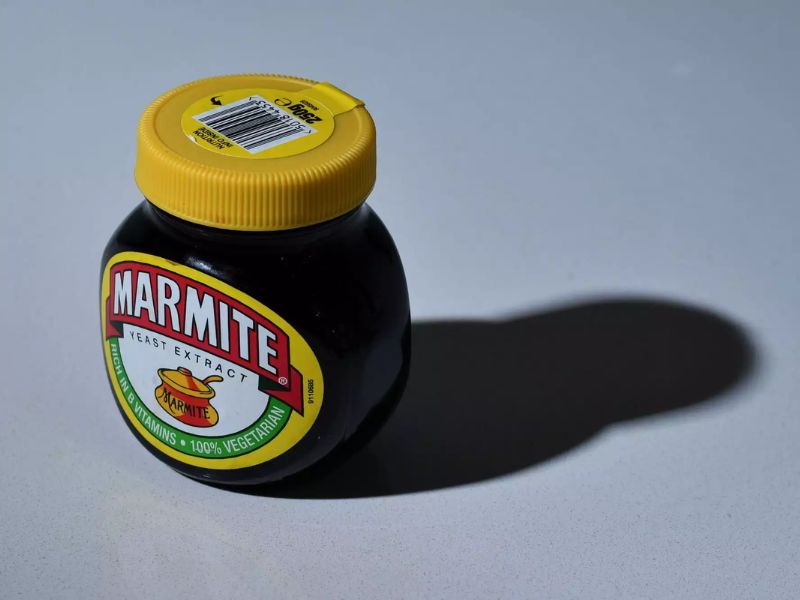When it comes to popular British food products, Marmite is often at the top of the list. This dark, savory spread is known for its unique and polarizing taste, with some people loving it and others hating it. But what exactly is Marmite, and why is it such a beloved (or reviled) part of British cuisine?
What is Marmite Made From?
Marmite is made from yeast extract, which is a byproduct of brewing beer. The yeast extract is combined with salt, vegetable extract, and a blend of spices to create the savory spread. The process of making Marmite involves fermenting the yeast extract over a period of several days, which gives the spread its distinctive flavor.
One of the key ingredients in Marmite is the yeast extract, which is rich in vitamins and minerals. In fact, Marmite is known for being a good source of vitamin B12, which is essential for maintaining healthy nerve function and producing red blood cells. However, Marmite is also high in sodium, so it should be consumed in moderation.
The History of Marmite
Marmite has a long and interesting history, dating back to the 19th century. The spread was first created in 1902 by a German scientist named Justus von Liebig, who discovered that yeast extract could be used as a rich source of vitamins and minerals. The product was initially marketed as a nutritious health supplement, but it soon became popular as a food spread.
During World War I, Marmite was provided to British soldiers as part of their rations. The spread became so popular among the troops that it was referred to as “the soldiers’ secret weapon.” After the war, Marmite’s popularity continued to grow, and it became a staple food in British households.
What Does Marmite Taste Like?
The taste of Marmite is difficult to describe, as it is unlike any other food. The spread has a strong, salty flavor with a rich umami taste. Some people describe the taste as “beefy,” while others compare it to a strong, salty broth.
One of the reasons why Marmite is so polarizing is that its flavor is so intense. Some people love the strong, savory taste, while others find it overpowering and unpleasant. If you’ve never tried Marmite before, it’s worth giving it a taste to see which camp you fall into!
How is Marmite Used?
Marmite can be used in a variety of ways, depending on your personal preference. One of the most common ways to enjoy Marmite is as a spread on toast. Simply spread a thin layer of Marmite on a slice of toast, and enjoy the savory, salty flavor.
However, Marmite can also be used as a seasoning in cooking. It can add a rich, savory flavor to soups and stews, and it can be used as a flavoring in sauces and gravies. Some people even use Marmite as a marinade for meat or vegetables, as it can add a unique depth of flavor.
Marmite Variations and Alternatives
If you’re a fan of Marmite, you’ll be happy to know that there are several different variations of the spread available. For example, you can purchase reduced-salt versions of Marmite if you’re looking to reduce your sodium intake. There are also Marmite-flavored snacks, such as crackers and rice cakes, for those who want to enjoy the flavor of Marmite in a different form.
If you’re not a fan of Marmite, there are also several alternatives available. One popular option is Vegemite, which is a similar yeast extract spread that is popular in Australia. Vegemite has a slightly different flavor than Marmite, but it is also known for being a polarizing food.
Where Can You Buy Marmite?
If you’re interested in trying Marmite, you can find it at most supermarkets in the UK. Marmite is also available online, so you can easily purchase it from anywhere in the world. In addition to the standard Marmite spread, there are also several other Marmite products available, such as Marmite-flavored biscuits, cheese, and even beer!
Marmite Recipes
If you’re a fan of Marmite, there are plenty of creative ways to incorporate it into your cooking. Here are a few recipes to try:
Marmite Pasta
This simple pasta dish is easy to make and packed with flavor.
- Cook 8 oz of pasta according to package directions.
- In a saucepan, melt 2 tbsp of butter over medium heat.
- Add 1 tsp of Marmite and stir until dissolved.
- Add 1/4 cup of heavy cream and stir until heated through.
- Drain the pasta and toss with the Marmite sauce.
- Serve with freshly grated Parmesan cheese.
Marmite Roast Chicken
This delicious roast chicken recipe is perfect for a cozy dinner.
- Preheat the oven to 400°F.
- In a small bowl, mix together 1 tbsp of Marmite, 1 tbsp of honey, and 2 tbsp of olive oil.
- Rub the mixture all over a whole chicken.
- Place the chicken in a roasting pan and roast for 1 hour and 15 minutes, or until the internal temperature reaches 165°F.
- Let the chicken rest for 10 minutes before carving and serving.
Final Thoughts
Whether you love it or hate it, there’s no denying that Marmite is a unique and iconic British food product. From its origins as a health supplement to its popularity as a savory spread, Marmite has a rich history and a devoted following.
If you’ve never tried Marmite before, it’s worth giving it a taste to see what all the fuss is about. And if you’re already a fan, there are plenty of creative ways to enjoy the savory, salty flavor of Marmite in your cooking.
So the next time you’re looking for a bold and flavorful ingredient to add to your dishes, consider reaching for a jar of Marmite!
